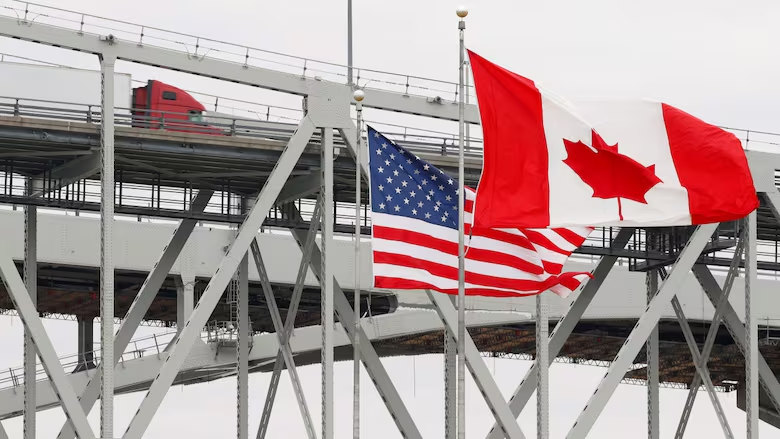The possibility of President Donald Trump imposing 25% tariffs on Canadian imports is raising serious concerns across North America. These tariffs, if enforced, could present a significant existential threat to Canada’s automotive sector, which is already struggling with the aftermath of economic challenges brought about by the pandemic and other global trade tensions.
This situation is particularly alarming for Ontario, the province that serves as the heart of Canada’s auto industry. Ontario has been the backbone of automotive manufacturing in Canada, where five major automakers — Ford Motor, General Motors (GM), Stellantis, Toyota Motor, and Honda Motor — collectively produced 1.54 million light-duty vehicles in the past year, largely destined for U.S. consumers. The potential imposition of tariffs on automotive products would severely disrupt this crucial industry, jeopardizing thousands of jobs and weakening the cross-border trade relations that have developed over decades.
The Impact of Tariffs: Economic Consequences for Both Sides
Ontario Premier Doug Ford, in a recent phone interview, voiced his deep concerns over the prospect of such tariffs, which could affect both Canadian and American workers. Ford pointed out that the impact of these tariffs would not be confined to one side of the border. Given the extensive cross-border flow of raw materials and automotive parts, the imposition of tariffs would lead to higher production costs. This, in turn, could drive up vehicle prices, slow down manufacturing, and ultimately lead to job losses in both the U.S. and Canada.
Ford emphasized that imposing tariffs on Canadian goods would create significant economic friction between the two countries, which have long enjoyed a mutually beneficial trade relationship. He remarked, “We already have a trade agreement in place that has been working well for both sides. The introduction of tariffs would not only harm Canadian workers but American workers as well.”
One of the primary reasons why the tariffs could lead to higher vehicle prices is the interconnected nature of the automotive supply chain. Automotive parts and materials routinely pass through the U.S.-Canada border multiple times before final assembly takes place. The imposition of tariffs on these products would not only raise the cost of individual components but would also slow the overall production process, increasing the end price for consumers.
Trump’s Tariff Threat: National Security or Economic Protectionism?
President Trump has justified his tariff proposals by invoking national security concerns, citing issues such as illegal immigration and the drug trade at the southern border. He has suggested that these issues threaten the U.S., and therefore, implementing tariffs would be a necessary step to address these concerns. However, the lack of clarity surrounding the specific details of the tariffs, such as whether exceptions would apply to certain products or industries, has left many business leaders and policymakers uncertain about how to prepare for these potential changes.
The possible consequences of such tariffs on the Canadian automotive industry are stark. According to a Wells Fargo analyst, imposing tariffs on Canadian auto parts could add anywhere between $600 and $2,500 to the price of a vehicle. For vehicles assembled in Canada and Mexico, the tariffs could raise prices by up to $10,000, a significant increase that could dampen consumer demand and hurt automakers’ bottom lines.
Ontario: The Heart of Canada’s Automotive Industry
Ontario has long been the epicenter of the Canadian automotive industry. The province is home to some of the world’s largest automakers and serves as a key trading partner for the U.S. In fact, Ontario is the third-largest trading partner for the United States, with trade between the two regions accounting for billions of dollars each year.
The automotive sector plays a vital role in Ontario’s economy. In 2023, Canadian exports of auto parts totaled $23.5 billion, while the export of light vehicles reached a substantial $53.5 billion. The U.S. is by far the largest destination for Canadian automotive exports, accounting for more than 95% of total exports. Given the immense economic importance of this trade, any disruptions caused by tariffs would have far-reaching consequences for both countries.
Flavio Volpe, the head of the Canadian Automotive Parts Manufacturers’ Association, argued that a 25% tariff on auto parts would be disastrous. According to Volpe, such tariffs could have severe ripple effects on both the Canadian and U.S. automotive sectors. He referenced the 2022 blockade at the Ambassador Bridge — the busiest border crossing between the U.S. and Canada — when Canadian truck drivers protesting vaccine mandates disrupted the flow of goods and halted manufacturing for several U.S. automakers. The incident highlighted just how interconnected the two countries’ automotive industries are and how easily disruptions can ripple through the supply chain.
Volpe stressed that the best possible scenario for both Canadian and American automotive parts suppliers is to have a tariff rate of zero. He pointed out that the trade relationship between the two countries is critical, and any disruption could have a domino effect across the automotive value chain.
Canadian Auto Industry on the Rebound
Despite these challenges, the Canadian automotive sector has shown signs of recovery in recent years. After experiencing a significant decline in production during the COVID-19 pandemic, Canada’s light-duty vehicle production increased to 1.54 million units in the past year, up from a low of 1.1 million vehicles in 2021. However, production levels still remain far below the industry’s peak of 2.9 million vehicles in 2000.
David Adams, the president of the Global Automakers of Canada, remarked that while the industry is still in the process of recovery, it is headed in the right direction. However, he also noted that ongoing challenges, such as the transition to electric vehicles (EVs), remain a major obstacle. As the automotive industry undergoes a transformation toward electric vehicles, the adoption of EVs has not occurred as quickly as anticipated. The federal government’s subsidies for EV purchases have provided some support, but President Trump’s threats to eliminate these subsidies could further exacerbate the industry’s difficulties.
“The auto industry is at a crossroads,” said Charlotte Yates, president of the Automotive Policy Research Centre at McMaster University. She pointed out that uncertainty around trade policies, along with the shifting political climate and the growing threat of tariffs, is making it harder for automakers to plan for the future. The industry’s future, she argued, depends on stability in trade relations and clear government policies that support the growth of electric vehicles.
A Call for Cooperation
Ontario Premier Doug Ford has urged both the U.S. and Canada to work together to address the challenges facing their respective automotive industries. Ford advocates for stronger cooperation between the two countries, especially in the face of growing economic pressures from global competitors, including China and Mexico.
“We should be focusing on the real threats to our industries, such as China and Mexico,” Ford said. “We have been allies for decades, and we should continue to work together as a team. A strong North American auto industry can’t be stopped if we stick together and create a united front.”
In the end, the question of tariffs is not just about economic policy; it is about the future of the Canadian and U.S. automotive industries and the thousands of jobs that depend on them. For the sake of both countries’ economic wellbeing and their longstanding relationship, it is critical that both sides find common ground and work together to protect the industries that have helped shape North America’s economic landscape.





Leave a Comment